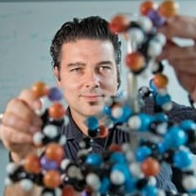The Progresses on Polyelectrolytes and Polyelectrolyte Complexes
A special issue of Molecules (ISSN 1420-3049). This special issue belongs to the section "Physical Chemistry".
Deadline for manuscript submissions: closed (30 November 2019) | Viewed by 19926
Special Issue Editor
Interests: charged objects in solution: polyelectrolytes and ions; dynamic and structural properties of complex electrolyte solutions; molecular theories of solvation: solvation principles and thermodynamic effects; co-solute and specific ion effects and their influence on macromolecular folding equilibria
Special Issues, Collections and Topics in MDPI journals
Special Issue Information
Dear Colleagues,
Polyelectrolytes are ubiquitous in many technological applications as well as in biological systems. Despite their importance, however, many of their properties are poorly understood. Our lack of understanding is largely due to the charge of the polyelectrolyte, which causes long-ranging electrostatic interactions and thus considerably complicates the development of more accurate models and theories. Moreover, the presence of other components as well as the influence of external fields leads to a multitude of interesting effects and complex mechanisms that massively influence the dynamics and the structure of polyelectrolytes. Important examples here are, in particular, the formation of polyelectrolyte complexes, the dissociation properties of weak polyelectrolytes, the distribution of mobile ions in the solution, the occurrence of specific ion effects and the influence of counterions on the polyelectrolyte dynamics. This Special Issue of Molecules is intended to provide an up-to-date overview of new results and the current state of knowledge in polyelectrolyte research. The corresponding experimental, theoretical, and numerical research results can cover a broad range of topics from applications of polyelectrolytes in electrochemical energy storage systems to studies of DNA structures.
Dr. Jens Smiatek
Guest Editor
Manuscript Submission Information
Manuscripts should be submitted online at www.mdpi.com by registering and logging in to this website. Once you are registered, click here to go to the submission form. Manuscripts can be submitted until the deadline. All submissions that pass pre-check are peer-reviewed. Accepted papers will be published continuously in the journal (as soon as accepted) and will be listed together on the special issue website. Research articles, review articles as well as short communications are invited. For planned papers, a title and short abstract (about 100 words) can be sent to the Editorial Office for announcement on this website.
Submitted manuscripts should not have been published previously, nor be under consideration for publication elsewhere (except conference proceedings papers). All manuscripts are thoroughly refereed through a single-blind peer-review process. A guide for authors and other relevant information for submission of manuscripts is available on the Instructions for Authors page. Molecules is an international peer-reviewed open access semimonthly journal published by MDPI.
Please visit the Instructions for Authors page before submitting a manuscript. The Article Processing Charge (APC) for publication in this open access journal is 2700 CHF (Swiss Francs). Submitted papers should be well formatted and use good English. Authors may use MDPI's English editing service prior to publication or during author revisions.
Keywords
- Polyelectrolyte Solutions and Polyionic Liquids
- Polyelectrolyte Complexes and Multilayers
- Polyelectrolyte Membranes
- Weak and Strong Polyelectrolytes
- Polyelectrolyte – Ion Interactions
- Specific Ion and Additive Effects
- Counterion Condensation
- Biological Systems: DNA and RNA
- Electrochemical Applications and Ion Transport Mechanisms
- Polyelectrolyte Electrophoresis and Dynamics






